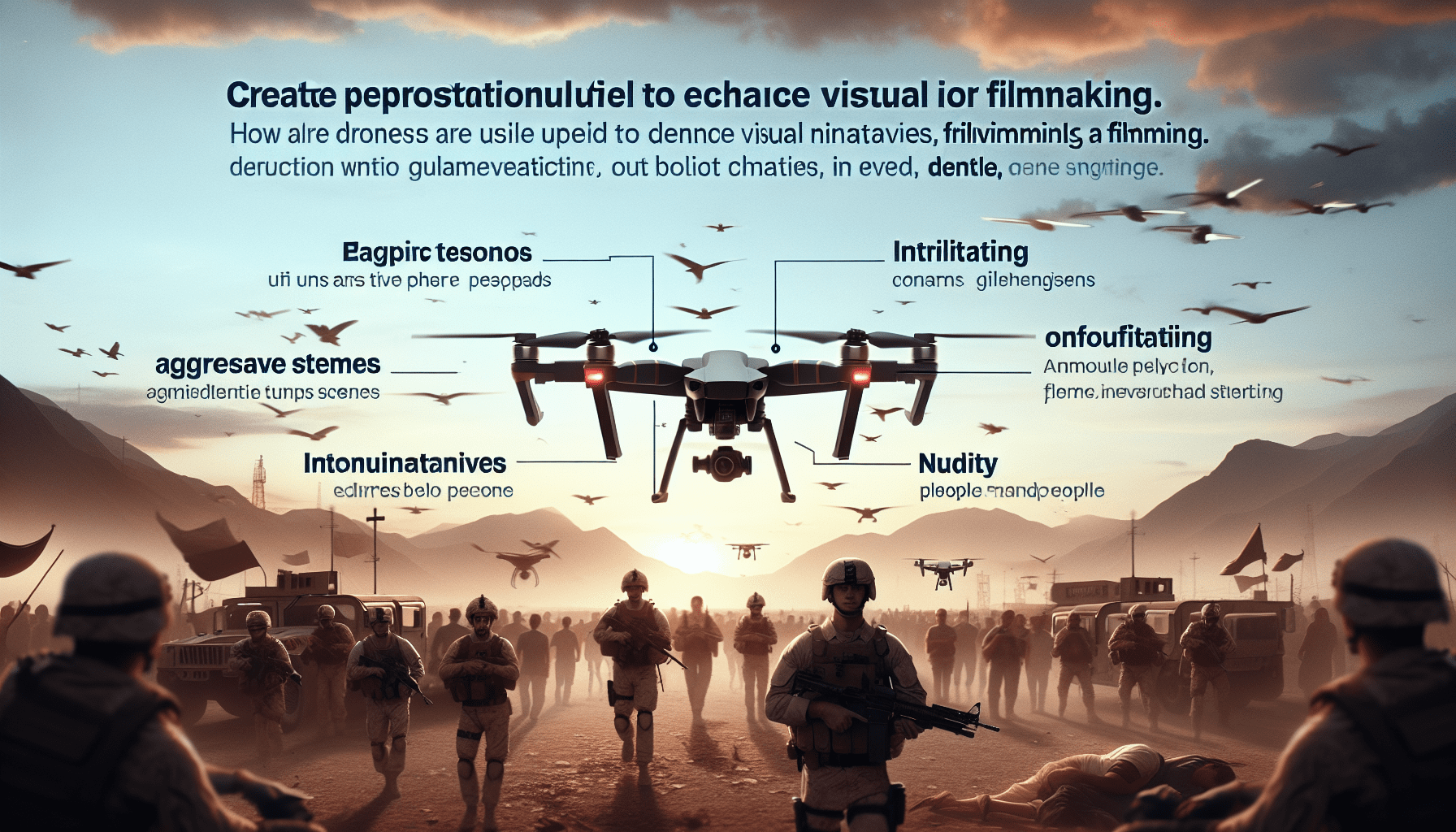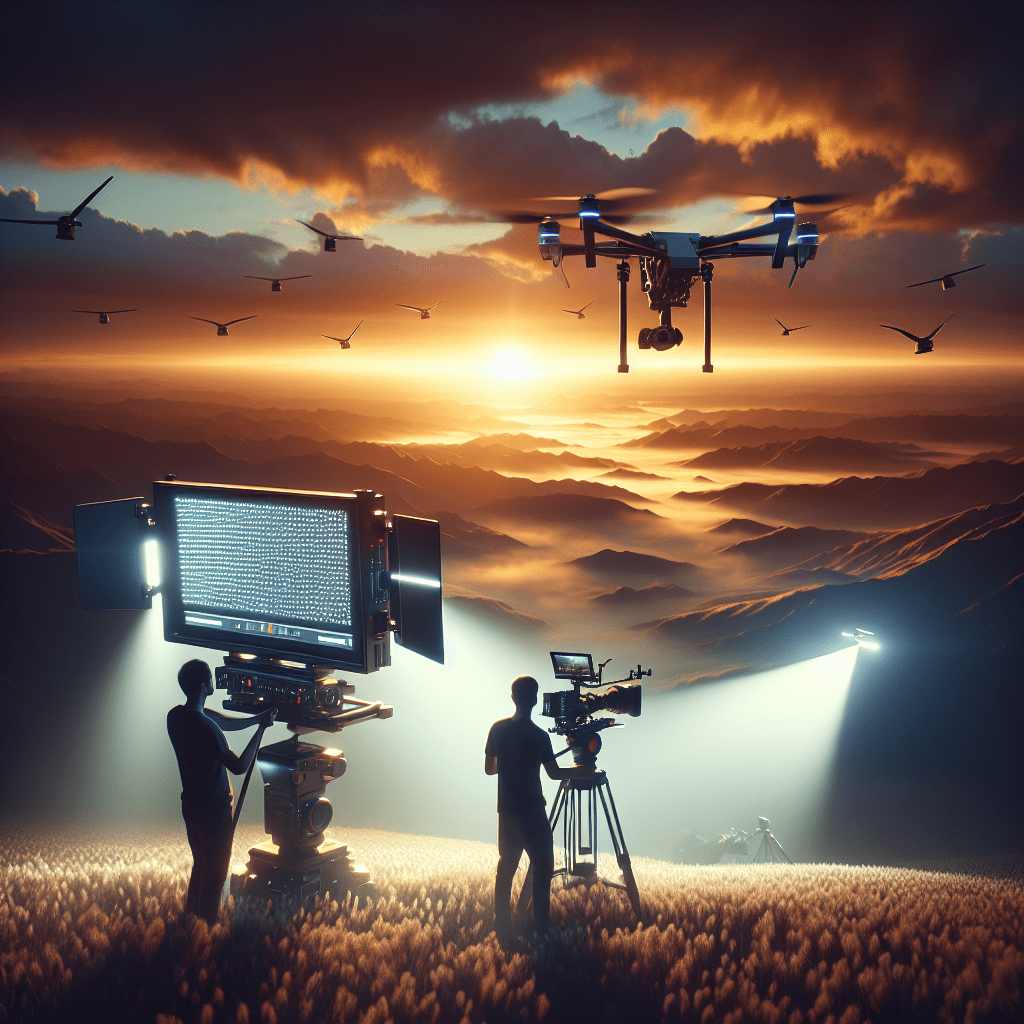Drone Storytelling: Tips for Aerial Cinematic Narratives
In This Article
- Drone storytelling incorporates aerial cinematography for stronger narrative immersion.
- Modern drones feature stabilisation, high-resolution cameras, and intelligent flight modes.
- Genres like documentaries, action, and sci-fi benefit significantly from drone visuals.
- Pre-production planning and knowledge of drone laws are crucial to success.
- Budget-friendly drones and software make drone storytelling accessible to all filmmakers.
- Post-production enhances aerial footage with grading, sound, and editing finesse.
The Rise of Drone Storytelling in Cinema
Why Drones Captivate Audiences
Drone storytelling has emerged as a transformative force in modern filmmaking. By seamlessly integrating aerial footage into visual narratives, drones offer a new dimension of storytelling that was previously restricted to big-budget productions with cranes or helicopters. From dynamic establishing shots to intimate tracking sequences, drone storytelling enables filmmakers to create emotional depth and scale within scenes, capturing perspectives that feel both cinematic and immersive.
Audiences are instinctively drawn to soaring visuals that provide spatial context and movement. Drone shots deliver this with elegance. They let viewers experience height, depth, and motion in ways that simulate flight, invoking a visceral reaction. These visuals not only create spectacle, but also contribute meaningfully to plot and tone. Whether it be a sweeping pass over rugged terrain or a delicate fly-through in a narrow alley, drones help tell the story through powerful visual language.

Tech That Enables Aerial Narratives
Gimbals, Cameras, and Smart Features
The recent advancements in drone technology have vastly improved storytelling potential. High-resolution cameras paired with three-axis gimbals ensure buttery-smooth footage, while stabilisation software optimises performance during challenging conditions. Many drones now offer smart flight features like ActiveTrack, Follow Me, and Point of Interest—all designed to help filmmakers orchestrate complex moves without manual piloting skills.
Moreover, the integration of 4K and even 8K cameras onto consumer drones allows for professional-grade footage at a fraction of historical costs. Built-in ND filters, adjustable apertures, and HDR capabilities further expand creative control. These innovations empower storytellers to focus more on artistic vision than technical limitations.
“Drone storytelling isn’t just about capturing great views; it’s about changing how the audience experiences a scene.” – Aerial Cinematographer Laurence Venn
Cinematic Techniques With Drones
Framing, Movement, and Emotion
Drone storytelling depends heavily on how shots are composed and executed. Filmmakers must go beyond simply capturing aerial footage—they must understand visual grammar. Framing becomes paramount. Whether using a top-down angle to isolate a lone character or orbiting around a central subject for dramatic effect, the choices around composition inform the story itself.
Movement plays an equally crucial role. A slow, rising drone shot can symbolise transcendence or liberation, while a fast, descending shot might communicate urgency or peril. The direction, speed, and altitude all contribute to the emotional tone. Combined with traditional cinematographic techniques, drones add fluidity and scale, deepening viewer engagement and enhancing storytelling impact.
Planning Drone Shots for Maximum Impact
Shot List, Timing, and Location
Like any cinematic tool, drones yield the best results with proper planning. Drone storytelling thrives on intentionality. Crafting a detailed shot list helps align the drone’s capabilities with the scene’s goals. Each drone shot should serve a narrative function—be it exposition, character development, or thematic reinforcement.
Equally important is location selection. Scouting ensures the site is legally permissible, visually compelling, and logistically feasible for drone operations. Timing matters too. The golden hours of sunrise and sunset provide natural lighting that can elevate footage with warmth and contrast. Mapping your flight path against solar positions can avoid shadows and overexposure, giving your aerial scenes a polished finish.
Genres That Thrive on Aerial Perspectives
From Documentaries to Sci-Fi
Certain genres benefit immensely from drone storytelling due to their intrinsic reliance on landscape, scale, or movement. Documentaries, particularly those focusing on nature, geography, or architecture, use drones to provide geographical context. By showing environments in their full grandeur, they establish both setting and tone.
Similarly, action and adventure films employ dynamic drone sequences for set-piece choreography. Chase scenes, battlefields, and large crowd spectacles are heightened with tracked aerial shots. Science fiction and fantasy genres further exploit drone storytelling to create sweeping vistas of imagined worlds, made more believable through layered drone passes and VFX-compositing techniques.
Mastering Storytelling Through Flight Paths
Movement With Meaning
Flight paths are a critical component of effective drone storytelling. The way a drone navigates space directly influences the viewer’s perception and emotional reaction. A circular movement around a subject might imply introspection or isolation, while a rising crane shot could suggest hope or progression.
Moreover, the drone’s speed alters urgency. Slow, smooth trajectories create drama or melancholy, while rapid fly-throughs can inject adrenaline. Good drone operators choreograph movement that aligns with the narrative arc. Practising simulated routes, using drone simulators or test flights, is vital to ensure expressive, cohesive cinematography that enhances rather than distracts from the story.
Challenges & Legal Considerations
Permissions, Safety, and Weather
Despite its creative potential, drone storytelling faces several hurdles—chief among them are legal and safety protocols. In the UK, drone pilots must register with the Civil Aviation Authority (CAA) and adhere to guidelines around airspace, no-fly zones, and privacy laws. This is particularly pertinent when filming in urban or populated areas.
Safety is equally non-negotiable. Filmmakers must conduct on-site risk assessments, maintain clear communication with crew, and respect limits on battery life and wind resistance. Weather, especially wind and precipitation, can abruptly ground flights or damage equipment. A flexible plan and backup shoot dates are crucial. For those unfamiliar with drone legislation, Comprehensive guide to cinematic drone cinematography provides a comprehensive up-to-date resource on UK drone laws.
Post-Production Magic
Color Grading and Sound Design
Once the main aerial footage is captured, the true art of drone storytelling continues in post-production. Colour grading adds emotional resonance and visual unity across scenes. Drone clips often require saturation tweaks, exposure corrections, and motion stabilisation to seamlessly blend with ground footage.
Sound design is another pivotal layer. Since drones record minimal or unusable audio, Foley effects, ambient sound, and music must be integrated thoughtfully. The soundscape anchors the visuals in tangible reality and enforces the mood—whether suspenseful, serene, or triumphant. Editing software like DaVinci Resolve and Adobe Premiere Pro offer powerful tools for achieving professional finishes even with modest equipment.
Drone Storytelling on a Budget
Affordable Tools for Indie Filmmakers
Drone storytelling isn’t reserved for major studios. Independent filmmakers can access cost-effective drones like the DJI Mini series or Autel Nano, which offer acceptable video quality and smart functionality at low entry points. Open-source editing software such as HitFilm Express allows for cinematic post-production without exorbitant licensing fees.
Additionally, renting drones and accessories can be a smart alternative to purchasing, especially for single projects. Online communities and forums provide extensive tutorials and case studies on getting the most out of available gear. Leveraging these budget-conscious strategies enables creatives to produce high-calibre visuals without compromising narrative ambition. Explore further examples at Learn more about Drone Cinematography and Storytelling.
Building a Visual Narrative Portfolio
Case Studies and Showreels
For professionals seeking to showcase their drone storytelling skills, a curated portfolio is essential. Begin by assembling a variety of scenes that demonstrate versatility—landscapes, urban sequences, narrative integrations, and genre-specific shots. Balance technical prowess with emotional storytelling.
Consider creating a dedicated showreel that pairs striking visuals with a compelling soundtrack and minimal text overlays. This reel should highlight your ability to integrate drone shots meaningfully, not just as eye candy. Including client testimonials, behind-the-scenes footage, and before/after grades can add valuable context. Learn more about building a narrative-rich showreel at Read a related article.
Conclusion: Transform Stories With Aerial Cinematics
Drone storytelling has unequivocally redefined the visual language of filmmaking. As both accessibility and innovation continue to evolve, filmmakers who master drone integration can elevate their work from technically competent to truly transcendent. Whether it’s revealing a landscape, exploring a character’s journey from above, or simply injecting scale into intimate narratives, drones offer tools that engage audiences like never before.
Great guide on drone-storytelling-enhancing-visual-narratives-in-filmmaking – Community Feedback
How do drones enhance storytelling in filmmaking?
Drones enable filmmakers to capture dynamic aerial shots, offering unique perspectives that elevate visual narratives and evoke emotions.
What are the key tips for effective drone storytelling?
Plan your shots to support the story, use movement purposefully, and consider lighting and location to maximize narrative impact.
What drone features are best for cinematic storytelling?
Look for drones with stabilised gimbals, high-resolution cameras, and intelligent flight modes like tracking and orbit for creative flexibility.

